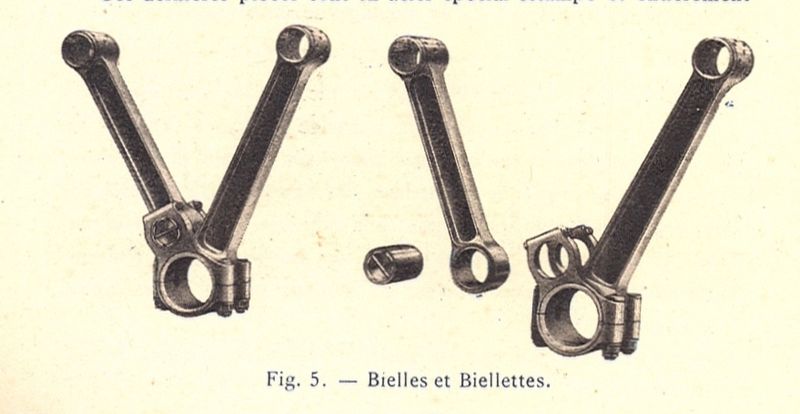- Login or Register
No account yet? Sign up
Except that the 2014 F1 results specifically require shared pins...321apex wrote:The Mercedes video depicting cranktrain of an alledged '14 F1 engine is highly unrealistic.
Why? Con rods don't share the crankpin, but are riding on a split journal a'la typical practice for even firing V6.
Rules say you must have only three conrod bearing journals in the crankshaft.twoshots wrote:Except that the 2014 F1 results specifically require shared pins...321apex wrote:The Mercedes video depicting cranktrain of an alledged '14 F1 engine is highly unrealistic.
Why? Con rods don't share the crankpin, but are riding on a split journal a'la typical practice for even firing V6.

why would fork and blade reduce side trust?wuzak wrote:Master and Slave rod systems woudl not be desireable, since one bank would have a different effective stroke to the other and the rod is so short that the master rod would end up with some funky angles.
Fork and blade would work better, but getting the cap bolts into the fork rod may be a bit of a squeeze.
In any case, the length of the engine (front mounting face to rear/gearbox mounting face) is defined by the rules and is longer than the V6 could be. So the only benefit of the fork and blade system would be a reduction in the side thrust force on the pistons, and I am doubting that this difference would be of any significance.
They wouldn't. It was something that was mentioned by another poster, which has been corrected now.langwadt wrote:why would fork and blade reduce side trust?wuzak wrote:Master and Slave rod systems woudl not be desireable, since one bank would have a different effective stroke to the other and the rod is so short that the master rod would end up with some funky angles.
Fork and blade would work better, but getting the cap bolts into the fork rod may be a bit of a squeeze.
In any case, the length of the engine (front mounting face to rear/gearbox mounting face) is defined by the rules and is longer than the V6 could be. So the only benefit of the fork and blade system would be a reduction in the side thrust force on the pistons, and I am doubting that this difference would be of any significance.
No, this is not true. There are many positions in which stroke does not change (for example, the one in the pic for 60º Vees)wuzak wrote:Master and Slave rod systems woudl not be desireable, since one bank would have a different effective stroke to the other and the rod is so short that the master rod would end up with some funky angles.
Same way you lubricate an engine with a crankshaft. You make oil pass from crankshaft to conrod.ringo wrote:How do you lubricate that bearing with the slave con rod?
Why are you pretty sure? Sound of engine?ppj13 wrote:[[...]But I'm pretty sure the renault engine does not fire at 90 and 150 angles.[...]
I do not understand "around a flywheel". Can you explain?ppj13 wrote:[...] They did something to even out the firing sequence around a flywheel. [...]
Sound by itself can be misleading.ppj13 wrote:To abarth: yes, sound. Now that you mention, "pretty sure" is too much. I'd better say "suspect".
I have a kind of a trained ear, and these things sing aloud. If you miss a fire in 8, it may go unnoticed. But if you fire unevenly all the time (bang-bang, bang-bang, bang-bang...) the music changes. And the renault, turbo hiss apart, is very much like the old V8 screamer.